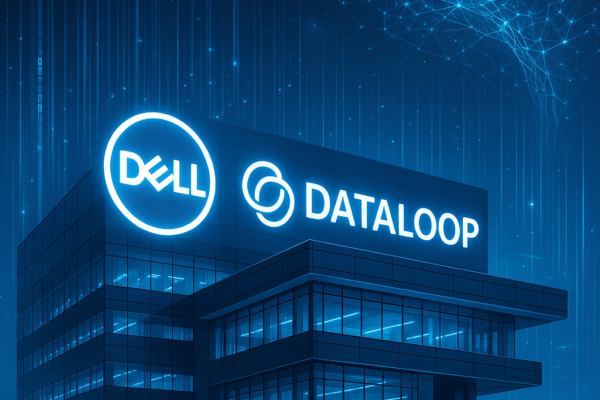The proposed $56 billion merger between Hygon Information Technology and Dawning Information Industry (Sugon) represents China’s most significant vertical integration play in advanced computing since US sanctions began reshaping its tech landscape. This stock-swap consolidation combines Hygon’s domestic x86 processor designs with Sugon’s supercomputing infrastructure capabilities, creating an end-to-end solution provider positioned to challenge US restrictions while advancing Beijing’s “Made in China 2025” semiconductor ambitions[1][2][9].
💼 Seasoned CorpDev / M&A / PE expertise
Transaction Architecture and Strategic Rationale
Deal Mechanics
The all-share transaction will see Hygon issue new A-shares to Sugon’s shareholders at a 3.5:1 ratio based on pre-halt valuations, with Sugon subsequently delisted from the Shanghai STAR Market. Concurrent private placements aim to raise ¥18.4 billion ($2.56B) for R&D integration and next-gen AI chip development[2][3]. The merged entity’s pro forma market cap of ¥407 billion ($56.7B) positions it as China’s third-largest semiconductor firm behind SMIC and Huawei’s HiSilicon[3][7].
Vertical Integration Imperative
This merger directly addresses critical supply chain vulnerabilities exposed by US Entity List restrictions. By combining Hygon’s Zen-derived x86 processors with Sugon’s TaihuLight supercomputing architecture, the new entity can control the entire stack from silicon design to hyperscale deployment – a capability previously dependent on AMD and Intel IP[1][7][9]. Internal documents reveal plans to deploy Hygon’s 128-core DCU accelerators across Sugon’s 14 national supercomputing centers by Q3 2026[1][9].
| Metric | Hygon | Sugon |
|---|---|---|
| Revenue | ¥9.16B ($1.28B) | ¥13.2B ($1.84B) |
| Net Profit | ¥1.93B ($269M) | ¥1.91B ($266M) |
| R&D Spend | 22% of revenue | 18% of revenue |
Regulatory Tailwinds Accelerate Consolidation
China’s revised M&A rules have been instrumental in facilitating this deal. The CSRC’s “2+5+5” fast-track approval process enabled regulatory clearance in just 12 working days compared to the historical 60-day average[3][17][18]. This policy shift aligns with Beijing’s directive to create “national champions” through strategic combinations – a key pillar of the updated MIC25 implementation framework[14][16].
“The Hygon-Sugon merger exemplifies our new paradigm of market-driven consolidation with state guidance. Such vertically integrated champions will form the backbone of China’s self-reliant tech ecosystem.” – CSRC Spokesperson, May 2025[12][17]
Post-Merger Integration Challenges
While the combination creates R&D synergies, integration risks loom large. Hygon’s 28% gross margins on server CPUs contrast sharply with Sugon’s 19% margins in low-end cloud infrastructure[2][8]. Analysts question whether the merged entity can maintain Hygon’s 75% YoY profit growth while absorbing Sugon’s legacy contracts[3][5].
Global Implications and Competitive Landscape
This consolidation alters the calculus for foreign competitors:
US Sanctions Countermeasures
The merged entity’s “sanction-proof” supply chain – from Hygon’s 7nm fabs to Sugon’s domestic server ecosystems – reduces reliance on TSMC and Western components by an estimated 40%[1][7]. However, advanced node production remains constrained by ASML export controls[9][14].
AI Arms Race Acceleration
Hygon’s DCU accelerators now power 11% of China’s AI training workloads. Combined with Sugon’s deployment networks, this could challenge NVIDIA’s residual China market share in compliant AI chips[9][11].
Path Forward
The merger’s success hinges on executing three strategic priorities:
Technology Roadmap Convergence
Aligning Hygon’s 3nm processor timeline (2027) with Sugon’s exascale computing initiatives requires ¥7.2B ($1B) in additional R&D spend through 2026[3][7].
Geopolitical Risk Mitigation
Establishing offshore manufacturing partnerships in Southeast Asia could circumvent potential secondary sanctions, though this contradicts vertical integration goals[14][18].
Capital Markets Execution
Post-merger equity offerings targeting international investors must balance Beijing’s control priorities with foreign capital needs – a tension highlighted by Hygon’s 2022 IPO valuation volatility[7][17].
Sources
https://www.tomshardware.com/tech-industry/supercomputers/chinas-hygon-and-sugon-merge-to-form-a-vertically-integrated-supercomputing-giant-as-they-fend-off-us-sanctions, https://www.caixinglobal.com/2025-05-26/state-backed-chip-and-server-firms-to-merge-amid-self-reliance-drive-102323435.html, https://www.yicaiglobal.com/news/chipmaker-hygon-to-merge-with-top-shareholder-dawning-amid-chinas-ma-push, https://www.tradingview.com/news/reuters.com,2025:newsml_L3N3RX01X:0-hygon-information-technology-says-plans-merger-with-dawning-information-industry-share-trade-to-halt/, https://www.marketscreener.com/quote/stock/DAWNING-INFORMATION-INDUS-21683505/company/, https://www.globallegalinsights.com/news/china-announces-dramatic-policy-shift-in-semiconductor-industry/, https://en.wikipedia.org/wiki/Hygon_Information_Technology, https://www.investing.com/equities/dawning-information-company-profile, https://www.scmp.com/tech/tech-war/article/3311838/sugon-hygon-merger-latest-sign-consolidation-chinas-computing-sector, https://www.tradingview.com/news/reuters.com,2025:newsml_L3N3RX024:0-dawning-information-industry-says-hygon-plans-to-merge-with-co-trading-in-shares-to-halt/, https://english.cw.com.tw/article/article.action?id=4136, https://practiceguides.chambers.com/practice-guides/corporate-ma-2025/china/trends-and-developments, https://www.scmp.com/business/banking-finance/article/3290269/china-pushes-ma-build-10-hi-tech-listed-firms-can-compete-globally-2027, https://www.uschamber.com/assets/documents/Was-MIC25-Successful-final.pdf, http://www.csrc.gov.cn/csrc_en/c102030/c1371009/content.shtml, https://www.chinalawandpractice.com/2015/01/16/listed-company-ma-and-restructuring-gets-overhauled/, https://english.sse.com.cn/news/newsrelease/digest/c/c_20250514_10778820.shtml, https://www.udfspace.com/article/5601703913590181.html





